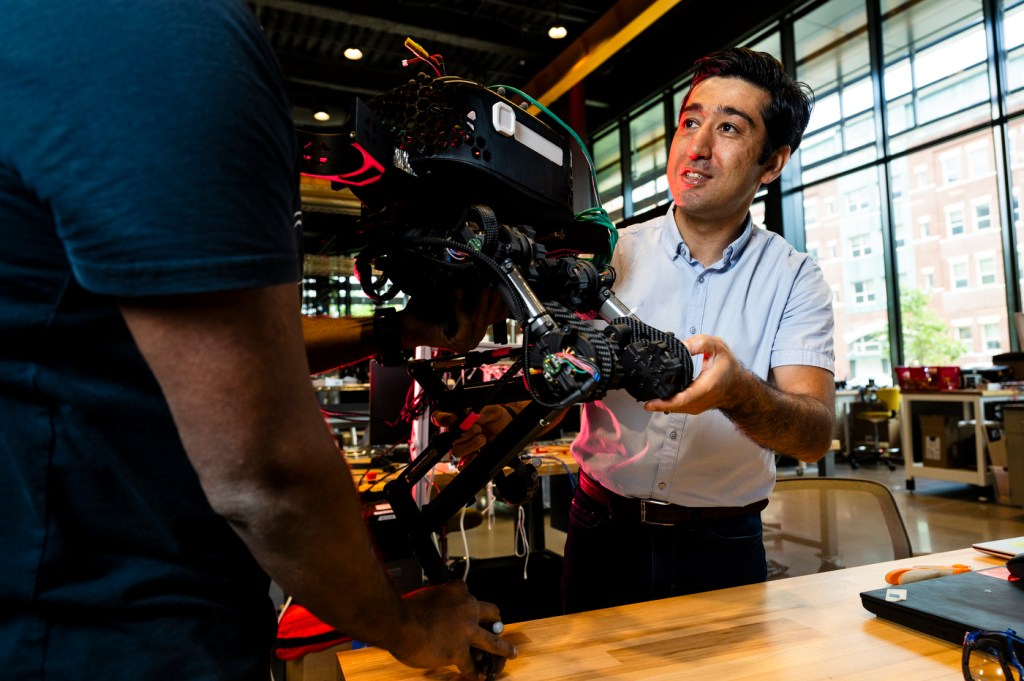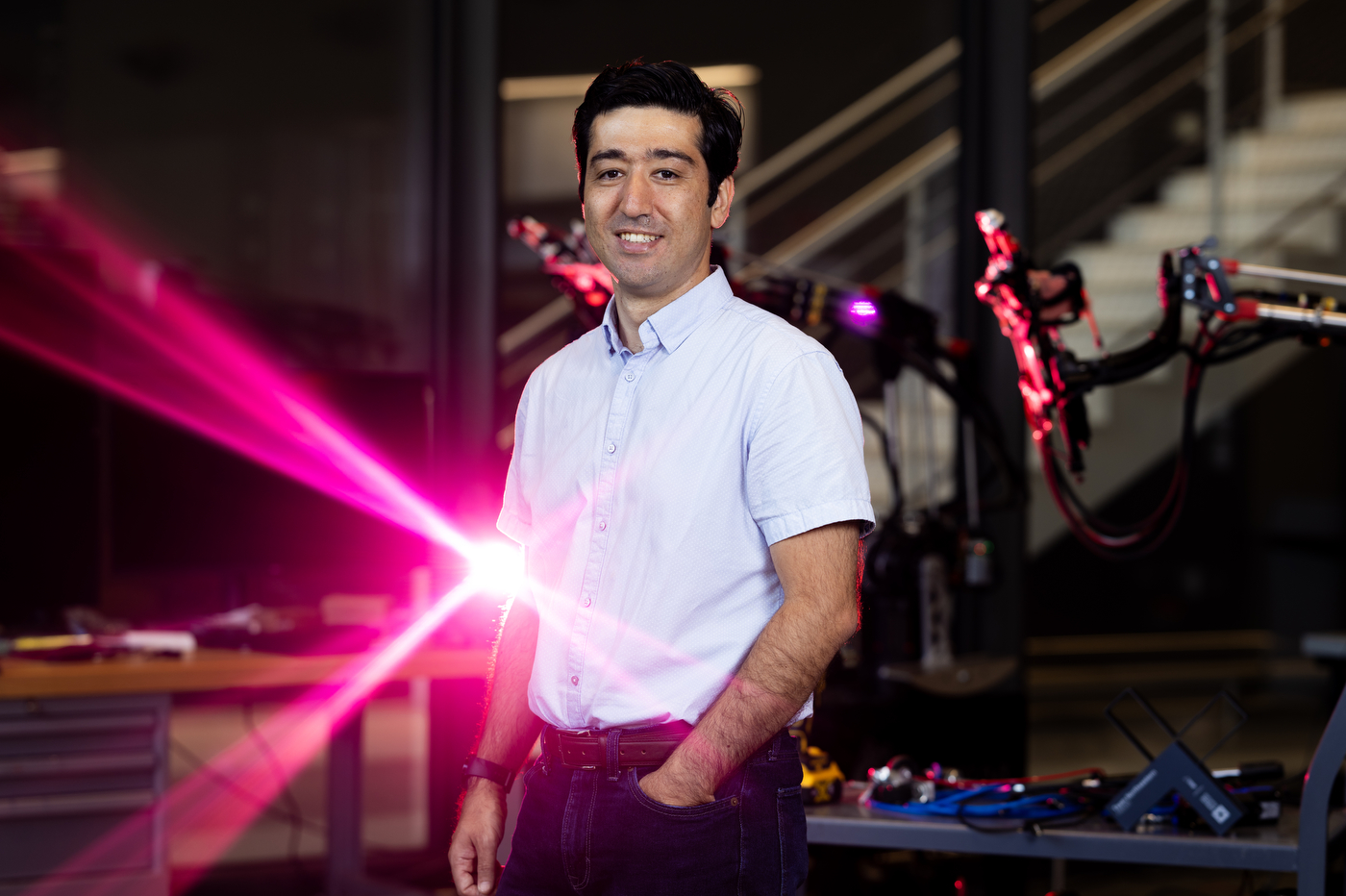Northeastern engineering professor receives NSF CAREER award for robotics research
Alireza Ramezani, Northeastern professor of electrical and computer engineering, recognized by science foundation for robotics development.

Alireza Ramezani is an unusual birdwatcher.
“Unlike others who enjoy watching birds fly, I actually like to watch them when they run and walk,” says Ramezani, an assistant professor of electrical and computer engineering at Northeastern University.
“If you look at the body size and the space available to accommodate all these muscles that eventually can be recruited by the locomotion system to be able to walk in a successful, stable way, they are doing a very impressive job,” he says.
He has also observed bats moving in the tight environment of a cage thousands of times in the past 10 years.
“They don’t fly. They dance in the air with great composure,” Ramezani says. “And that’s something that has kept me interested in robotic biomimicry.”

Scientific observation of these animals inspired Ramezani to create a bat robot, earning him the cover of Scientific Robotics in 2017. In 2021, Scientific Robotics featured the results of his research as a cover article again, this time on reproduction of birds’ locomotion, or self-generated propulsion from one location to another. In 2023, Ramezani advanced his research further, publishing a paper in Nature on locomotion plasticity, or movement adaptability, of birds.
Ramezani’s achievements have been recognized recently with a Faculty Early Career Development (CAREER) award from the National Science Foundation that earmarked $681,000 for development of a robot that can fly and walk in confined, very tight environments.
Featured Posts
“They have snake robots that can operate in extremely tight and confined environments already, but they are very slow,” Ramezani says. “They are not efficient. And then you compare their mobility with the fast mobility of birds or flight capabilities of bats inside confined environments — they are not comparable.”
The NSF panel pointed out, Ramezani says, that he already has a good team to be able to deliver a robot in five years. Ramezani’s team consists of seven doctoral students, one postdoc and master’s degree and undergraduate students helping out on the project.
“We got the set of skills needed to accomplish the goals,” he says. “We got mechanical engineers with design skills, electrical engineers with electronics design skills, computer engineers and mathematicians with the ability to model these systems.”
Ramezani says he loves to interact with his students, do experiments with them, and share the knowledge he has gained throughout the years of developing and testing these types of robots.
He ultimately aims to collaborate with a number of major industry stakeholders such as the German space agency, DLR, and Amazon Robotics to commercialize the outcome of the project.
Another goal that Ramezani has set for himself is to promote gender equity within Northeastern’s robotics program with this project.
“Throughout these five years that I have been at Northeastern, I have had great women-students,” he says. “The reality is that we don’t have a whole lot of women-students within our Institute for experiential robotics.”
Ramezani currently has three female students working at his lab, but he would like to have an equal number of men and women on his team.
“I think we should sort of make this opportunity more accessible to our women-students,” he says.
To highlight and attract more attention to the robotics at Northeastern, Ramezani is planning to highlight the artistic aspect of his NSF career award.
He is working with an artist to bring a form of art known as kinetic sculpture art to the Boston campus so that the students can make a connection between art, engineering and robotics through these sculptures.










